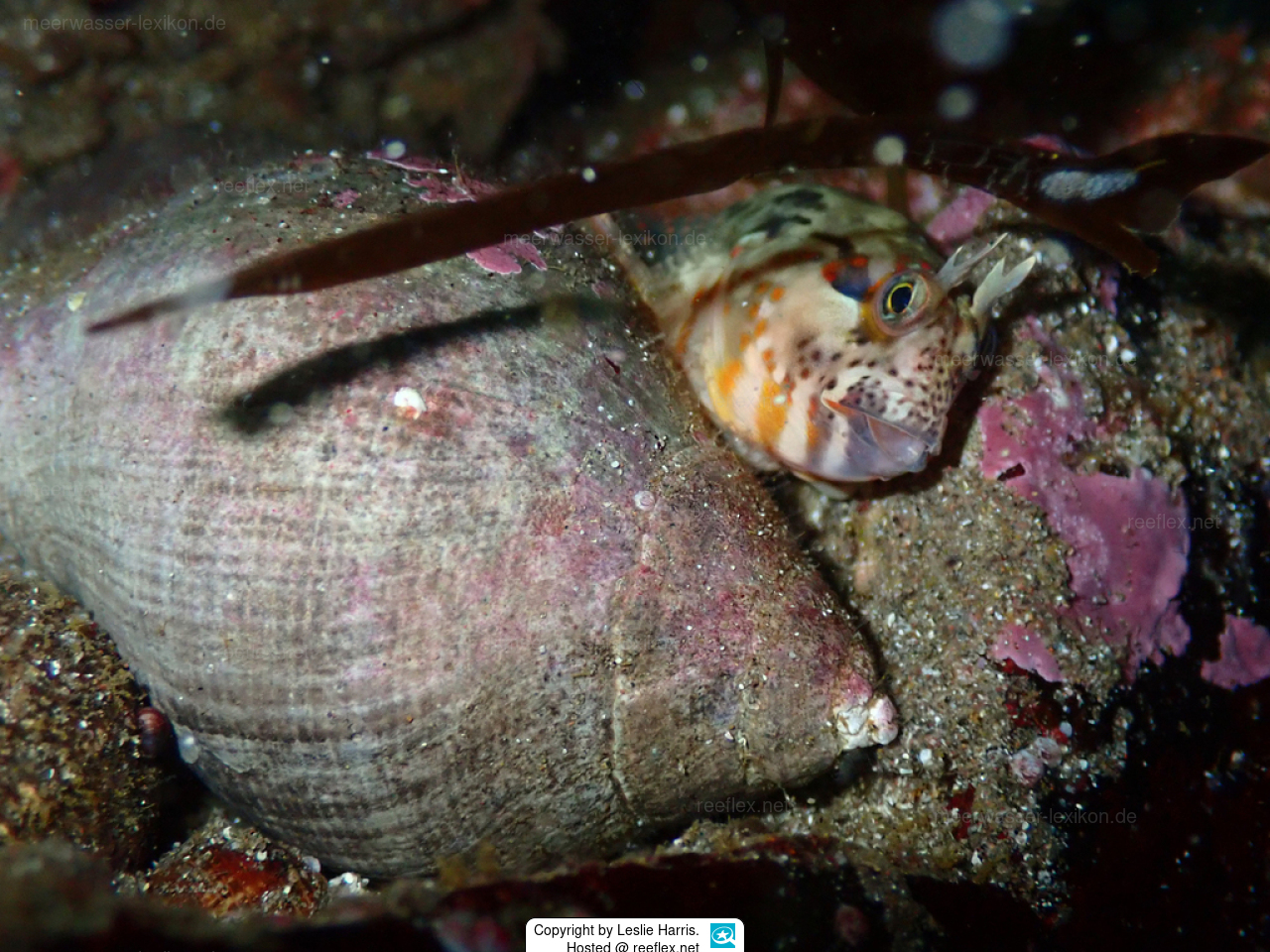Info
The blenny, which grows up to 11.6 cm in length, is often found in the shells of sea squirts of the genus Megabalanus. These are about 7 cm tall. The Combtooth Blenny is native to the southeast Pacific from Lima, Peru south to Chile.
The blenny has a short, powerful head with a very steep front profile. The eye cirri (one above each eye) can be simple or have up to 6 branches. There is a short cirrus at the nostril.
The basic color is light brown. The head has small dark spots on the mouth and top of the mouth, sometimes also spots on the top of the head, gill cover and lower part of the mouth.
There are several orange bars under the mouth, two orange lines above and a dark spot behind the eye.
The body and base of the tail have about 6 irregular dark bars, the last 2 bars are blackish with a white bar in between.
The blenny lives in rocky reefs at depths of 1-20 m.
The blenny is the host of numerous ecto- and endoparasites:
Caligus cheilodactylus
Hemipera cribbi
Hemipera cribbi
Hypoechinorhynchus magellanicus
Lecithaster macrocotyle
Lecithaster macrocotyle
Microcotyle chilensis
Microcotyle sprostonae
Prosorhynchoides carvajali
Prosorhynchoides carvajali
Prosorhynchoides carvajali
Prosorhynchoides carvajali
Synonymised names:
Blennechis biocellatus Valenciennes, 1836 · unaccepted
Blennechis fasciatus Jenyns, 1841 · unaccepted
Blennechis ornatus Jenyns, 1841 · unaccepted
Blennius nigrescens Sauvage, 1880 · unaccepted
Blennius riverosi Fowler, 1951 · unaccepted
Blennius sordidus Bennett, 1828 · unaccepted
Salarias chilensis Clark, 1938 · unaccepted
Jumping guard
A jumping guard prevents (nocturnal) fish from jumping out.
Wrasses, blennies, hawkfishs and gobies jump out of an unprotected tank in fright if their night rest is disturbed, unfortunately these jumpers are found dried up in the morning on carpets, glass edges or later behind the tank.
https://www.korallenriff.de/en/article/1925_5_Jump_Protection_Solutions_for_Fish_in_the_Aquarium__5_Net_Covers.html
A small night light also helps, as it provides the fish with a means of orientation in the dark!







 Leslie Harris, USA
Leslie Harris, USA









